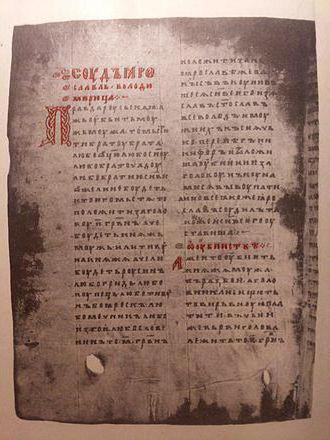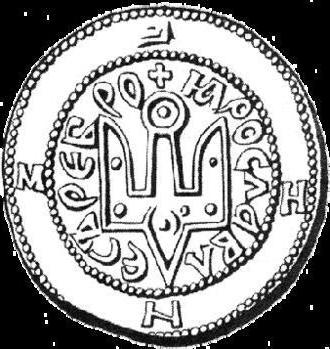Vira in ancient Russia is a fine for murder or mutilation
Vira in ancient Russia is a monetary penalty formurdered or crippled man, provided for by the prince's power in order to replace the blood feud with a contribution to the treasury. For the first time, the new resolution was officially and legally fixed in the 11th century, during the reign of Prince Yaroslav the Wise of Kiev. Some historians consider this innovation to be an important stage in the transition from blood relations to sociopolitical relations.
General characteristics of the era
Vira in ancient Russia is a new step in strengtheningprincely power in the early history of our country. At the considered time, this institution only began to form in society. A major role was still played by tribal relations with which it was necessary to reckon. The rule of blood revenge, which did not correspond to the principles of the emerging young state, was preserved. There was a need to streamline social relations in order to subordinate them to supreme power. Therefore, a vira in ancient Russia is an important measure in strengthening the status of a prince.

Value
The first mention of this concept in Old Russiansources refers to the 9th century, it is found in the contracts of the Russians with the Greeks. In the famous "Tale of Bygone Years", in a story about the reign of Vladimir the Saint, there is a mention of how this prince began to put things in order in his possessions, and for this he began to fight against the robbers. The Chronicler reports that after the adoption of Orthodoxy, he replaced the execution for the virus. It should be borne in mind that the first concept did not always imply the death penalty, but also implied any kind of punishment of medium gravity. This word denoted physical attacks, confiscation of property, arrest and others. Finally, the son of Vladimir Yaroslav, nicknamed the Wise, confirmed this decision in one of the oldest legal monuments. According to "Russkaya Pravda", a vira in ancient Russia is a contribution in favor of the prince for the killed or mutilated.
Application
Some historians note that the introduction of a newThe norm envisaged, first of all, the protection of princely people. The price for their murder for those times was quite high - 40 hryvnia. For this money you could buy a flock of sheep or several cows. So, the amount was quite large for the average person and contributed to the replenishment of the princely treasury. In this regard, vira became an important means of regulating public relations. In ancient Russia this is the age of affirmation of the supreme grand prince's power, so the new norm was intended to strengthen its surroundings.

The source in question also mentionsOther social strata that were under the protection of the prince. They are Rusyns and Slavs. In historiography, there are different points of view regarding the content of these concepts, as will be discussed below. Here it is necessary to add that the supreme power, expanding the circle of persons for whose murder or mutilation was supposed to pay the virus, strengthened its positions in the society.

Categories of persons
So, historians disagree aboutof what "Russian Pravda" implied under the terms "Rusyn" and "Slav". Under the first term, some refer to a prince's warrior, a volunteer, referring to more ancient sources, in which "Rus" denotes the nearest entourage of the ruler. However, some authors, with respect to the 11th century, expand the content of the concept, arguing that it is not just about princely warriors, but also about the categories of the urban population in general, and note that thus the government sought to subordinate the city to its influence. Supporters of this point of view in this contrast the Ruthenian Slav, seeing in the last villager. They emphasize that in this way the supreme power tried to subordinate not only the urban population, but also the village.
Expansion of the concept
One of the controversial issues in the study of earlyhistory - what is a vira in ancient Russia. The definition of this term is rather difficult due to the fact that it is not explained in any way and is not explained in the source studied. However, already in the next major legal monument - "Pravda of Yaroslavich" - it is noted that the payment for the murder or mutilation of a princely man - a stableman is increased. This is seen as a written record of the process of strengthening the princely power. Indicative is the fact that these sources provided for the payment of a fine only for free people. The killing or mutilation of a servant, for example, was not payable. In addition, there was still a wild vira in ancient Russia. This concept was understood as the procedure for collecting a fine from the whole community in the event that the killer is not found, or if he himself can not pay for himself. Thus, the community members turned out to be bound by mutual responsibility.

Role
The penalty payment system was an established mechanism. He collected a special prince's servant - virnik, and the prince gave one tenth to the bishop. Therefore, great importance in strengthening the supreme power played a vira in ancient Russia. The significance of this rule was very important for eliminating the rule of blood revenge, replacing it with a system of public punishments, and for strengthening the supreme power.
</ p>




